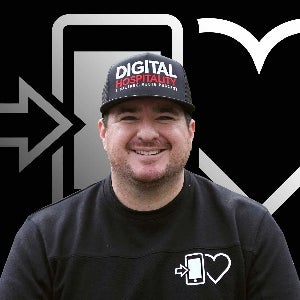Why Customers Are Unhappy With Anything Less Than a Perfect Match As hyper personalization takes over on-demand industries, the equation for superior customer satisfaction becomes more complicated.
By Eyal Ronen Edited by Dan Bova
Opinions expressed by Entrepreneur contributors are their own.

Are we moving in a direction where personalized on-demand services become even more personal? Would you be willing to wait five more minutes to have your favorite Uber driver come to pick you up instead of a random driver? Would you trust a specific Instacart picker to choose the fruit just the way you like it?
The era of personalized on-demand services is upon us. Almost any kind of service you can think of is now available as an app or a mobile service, making our lives more convenient and efficient.
When building such a service, companies are focused on building a system that will match (in real time) a customer and a service person (usually a 1099 employee). The play is to make sure you are growing your demand while also growing supply on the other. You have to create a dynamic balance between supply and demand and grow them in parallel in order to make sure demand is answered as quickly as possible. This type of dynamic balance is crucial for the growth of any service. Unhappy service people -- getting only one or two tasks a day -- will just move to the next service or be less responsive when needed most.
Related: 4 Essentials for Growing an On-Demand Company
Supply and demand.
Imagine you are growing your own ride service for example. You have 100 customers a day asking for a ride and around 20 drivers willing to take them. At first, the math seems to be simple: Each driver will make five pickups a day and you are covered. The actual math is way more complex: At 8 am, you have 30 people asking for a ride, then you have a downtime of a couple of hours where only two or three rides are requested, and then again around lunch time, demand peaks again. The easy solution is to have more drivers. If you have more drivers, you can cover peak time easily. But then, what will all of those drivers do when no rides are booked after 10 am? Finding the right balance between the number of drivers and the number of rides is key.
Things become even more complicated when starting to measure things like "Average Customer Waiting Time" or "Time/Miles spent between Rides". Each one of these parameters will have a direct effect on the efficiency and profitability of the service as well as your drivers' happiness.
To make a service successful, the entire supply chain should be happy. Customers (demand) should be answered in a reasonable time; the service team should be directed efficiently so they can make a profit as well, without wasting money and time on the road; while always maintaining competitive pricing and delivering a superior customer experience compared to old fashioned services.
Sound complicated? It is!
Related: 10 Ways to Keep Making Your Clients Happier and Happier
The match.
Most on-demand services measure themselves using several KPIs. Most focus first and foremost on the speed of service. How quickly can we deliver your lunch? How long will you have to wait for your ride to show up? And so on. In some cases, this focus on speed of service and availability will come at a price: unhappy service people and higher churn of employees.
But let's review several other key elements that are important:
1. Time spent in-between services;
2. Average distance the service person has to drive between tasks;
3. Average task time;
4. Customer satisfaction level;
5. Employee satisfaction level; and,
6. Employee churn.
Improving those KPIs is challenging, though it is the foundation for a successful (dare to say, profitable) service.
But is that enough? Can we build a more satisfying product/service for all parties involved? Can we really create a perfect match?
The perfect match.
Creating the perfect match between a customer and a service person is an art. It's a combination of real-time data and long-term meta-data -- helping the systems behind the service to make the right decisions based on all the compiled data.
Let's take a repair service as an example. Our real-time data would be: Location of customer, available technician, type of problem, technician skill and rating, and the availability of the needed part replacement.
Long-term meta-data will include: Repair order behavior over the last year (more phone repairs are requested at 8 am or at lunchtime in mid-town Manhattan. Towards the evening more repairs are requested in the Upper East Side); women prefer older technicians (based on satisfaction levels) or female technicians; an iPad Air repair will be more complex than an iPhone 5 repair; more people prefer repairs to be done at their workplace or a local Starbucks than at home in the morning hours.
Related: 12 Great Resources for Diving Into Consumer Psychology
Adding to this the data about a technician's performance, the number of jobs he completes each day, and his rating will help make sure the economics of our technicians are working as well.
Combining the real-time demand with the long-term meta-data, automatically, will yield a unique combination of the right technician at the right time for the right customer. As scale goes up, so does system flexibility and the amount of data gathered, making the calculations more complex but with an end result of more satisfactory transactions.
Think of this next time you order your avocados from your local market and whether they arrive in the exact ripeness you like. Was your order a perfect match?










